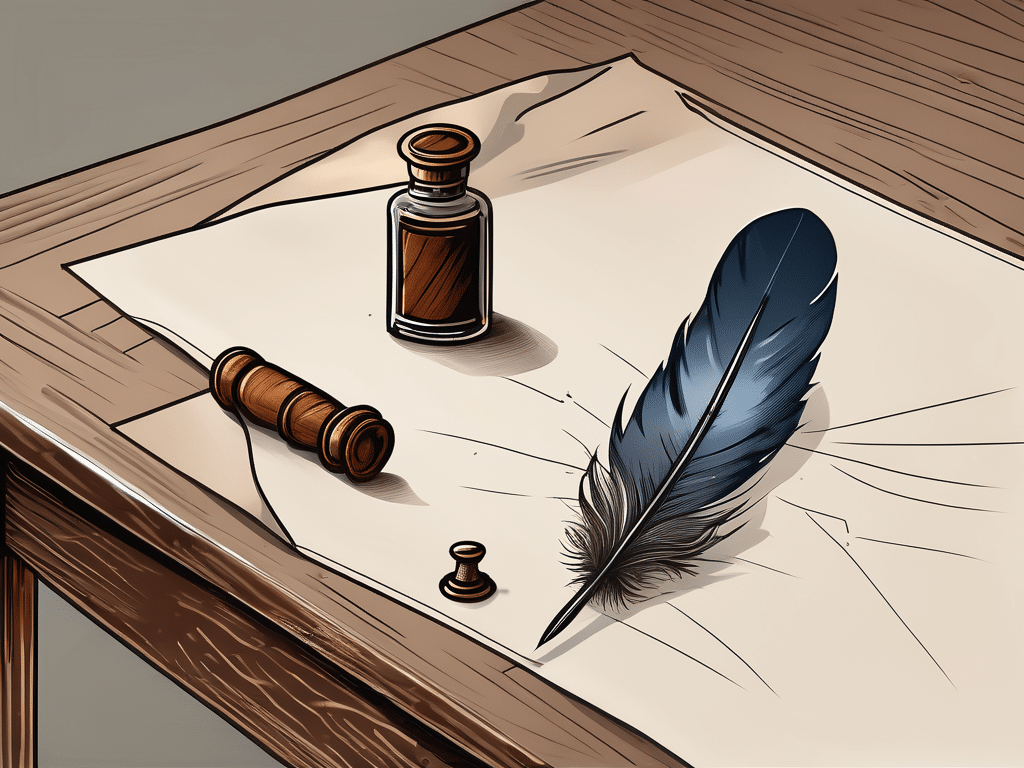Cease and desist letters are an effective tool for individuals and businesses to protect their rights and address unwanted actions by others. Whether it’s copyright infringement, harassment, or a breach of contract, a well-crafted cease and desist letter can communicate your concerns and demands clearly and assertively. In this article, we will explore the purpose and legal implications of such letters, as well as the essential elements, tips for writing, and the next steps to take after sending one.
Understanding the Purpose of a Cease and Desist Letter
A cease and desist letter is a powerful tool used in legal matters to formally demand that an individual or entity stop a specific behavior or activity. This type of communication is often the first step taken to address a situation where someone’s actions are infringing upon your rights or causing harm. By sending a cease and desist letter, you are asserting your legal rights and putting the recipient on notice that further action may be taken if they do not comply.
It is important to note that a cease and desist letter is not a legally binding document in itself, but it can hold significant weight in legal proceedings. This formal communication serves as evidence that you have attempted to resolve the issue amicably before pursuing more aggressive legal action. It also provides a clear record of your demands and can be used to demonstrate that you have taken reasonable steps to protect your rights.
Legal Implications of a Cease and Desist Letter
While a cease and desist letter is not a lawsuit, it can lay the groundwork for future legal action if the recipient does not comply with the demands outlined. In some cases, the recipient may choose to ignore the letter, leading to potential court involvement. By initiating the process with a cease and desist letter, you are signaling your willingness to enforce your rights through legal means if necessary.
When Should You Consider Writing a Cease and Desist Letter?
There are numerous scenarios where sending a cease and desist letter may be appropriate and effective. For instance, if you discover that someone is using your copyrighted material without authorization, a cease and desist letter can be a proactive measure to protect your intellectual property rights. Similarly, in cases of online harassment or defamation, a well-crafted cease and desist letter can serve as a strong deterrent, urging the offending party to cease their harmful actions immediately.
Essential Elements of a Cease and Desist Letter
When writing a cease and desist letter, there are crucial elements that you should include to ensure the effectiveness of your message. These elements include:
Identifying the Infringing Party
Begin your letter by clearly identifying the individual or entity you believe is infringing upon your rights. Provide their name, contact information, and any relevant details to avoid any confusion. Keep the tone professional and avoid personal attacks.
It is important to conduct thorough research to ensure that you have correctly identified the infringing party. Double-check all contact information and details to prevent any misunderstandings that could weaken your case. Remember, accuracy and precision in this step can significantly impact the outcome of your cease and desist letter.
Detailing the Infringement
In a concise and factual manner, outline the specific actions or behaviors that are infringing upon your rights. Provide evidence, such as timestamps, screenshots, or relevant documents, to support your claims. This section should clearly demonstrate how their actions are in violation of your rights.
Include a detailed timeline of events leading up to the infringement to provide context and strengthen your case. By presenting a clear and organized account of the infringement, you can effectively convey the severity of the situation to the recipient. Additionally, highlighting the negative impact of the infringement on your rights or business can further emphasize the importance of addressing the issue promptly.
Outlining the Desired Action
Clearly state the specific actions you want the recipient to take. Whether it’s removing infringing content, ceasing a specific behavior, or providing compensation for damages, it’s important to be specific and realistic in your demands. Setting a deadline for compliance can also add urgency to your request.
Consider offering the recipient an opportunity to resolve the issue amicably before pursuing further legal action. Providing clear steps for compliance and offering a way to open a dialogue can sometimes lead to a quicker and more satisfactory resolution. However, make sure to clearly communicate the consequences of non-compliance to convey the seriousness of the situation.
Writing the Cease and Desist Letter
When writing your cease and desist letter, consider the following tips:
Before delving into the specifics of drafting a cease and desist letter, it’s crucial to understand the legal implications and consequences associated with sending such a document. Cease and desist letters are typically the first step in a legal process to stop a particular activity, and they often serve as a formal warning before further legal action is taken.
Choosing the Right Tone and Language
While it’s important to assert your rights, maintaining a calm and professional tone can help facilitate a resolution. By approaching the situation with a level-headed demeanor, you are more likely to encourage a constructive dialogue and potential resolution. It’s essential to convey your message clearly and firmly without resorting to aggressive or hostile language.
Moreover, it’s advisable to seek legal counsel or guidance when crafting a cease and desist letter to ensure that your language is legally sound and effectively conveys your intentions. Legal professionals can provide valuable insights into the appropriate tone and language to use, helping you navigate the complexities of asserting your rights while adhering to legal standards.
Structuring Your Letter Effectively
Divide your letter into clear sections, using headings and paragraphs to organize your points. This structured approach not only enhances the readability of your letter but also underscores the seriousness of your message. By presenting your arguments in a logical and organized manner, you can effectively communicate the basis for your demands and the potential consequences of non-compliance.
Additionally, incorporating relevant legal references or citations can strengthen the validity of your claims and demonstrate a thorough understanding of the legal context surrounding your cease and desist request. Providing specific details and supporting evidence can bolster the credibility of your letter and compel the recipient to take your demands seriously.
Sending the Cease and Desist Letter
Once you have finalized your cease and desist letter, it’s time to send it. Consider the following:
Before sending out your cease and desist letter, it’s important to ensure that the recipient is clearly identified. Make sure to double-check all contact information to guarantee that the letter reaches the intended party without any delays or miscommunications.
Choosing the Right Method of Delivery
Decide how you want to deliver your letter. Sending it via certified mail with a return receipt requested can provide proof of delivery and create a paper trail. Alternatively, you may choose to send the letter via email, ensuring that you request a read receipt or delivery confirmation.
When opting for certified mail, make sure to keep a copy of the receipt and tracking information for your records. This will help you track the delivery status and provide evidence that the letter was sent within the specified timeframe.
Documenting the Process
Keep a record of all communication related to your cease and desist letter. This includes the date and time you sent the letter, any responses received, and any further actions you may have taken. This documentation can be crucial if the situation escalates and legal action becomes necessary.
Additionally, consider maintaining a detailed log of any ongoing interactions or violations post-letter delivery. This log can serve as a chronological record of events, which may prove invaluable should litigation be pursued in the future.
Possible Outcomes and Next Steps
After sending your cease and desist letter, there are a few potential responses and actions to be aware of:
It’s important to note that the effectiveness of a cease and desist letter can vary depending on various factors such as the clarity of the infringement, the recipient’s willingness to comply, and the legal strength of your claims. While a positive response and compliance from the recipient are the desired outcomes, it’s essential to be prepared for different scenarios.
Potential Responses to Your Letter
The recipient may respond positively and comply with your demands, which is the ideal outcome. Alternatively, they may ignore your letter or respond with a refusal. In such cases, you may need to consider taking further legal steps to protect your rights.
It’s crucial to document all communications and responses received after sending the cease and desist letter. This documentation can serve as valuable evidence in potential legal proceedings and can help strengthen your case if further action is required.
Legal Actions Following the Letter
If the recipient continues the infringing behavior despite your cease and desist letter, you may need to consult with an attorney to explore legal options. This could include filing a lawsuit for damages or seeking an injunction to stop the behavior immediately.
Engaging in legal action can be a complex and time-consuming process, requiring careful consideration of the potential costs and benefits. It’s advisable to seek guidance from legal professionals who specialize in intellectual property law to navigate this process effectively.
Writing and sending a cease and desist letter requires careful consideration and understanding of the legal implications involved. By following the tips and guidelines outlined in this article, you can effectively assert your rights and protect your interests


